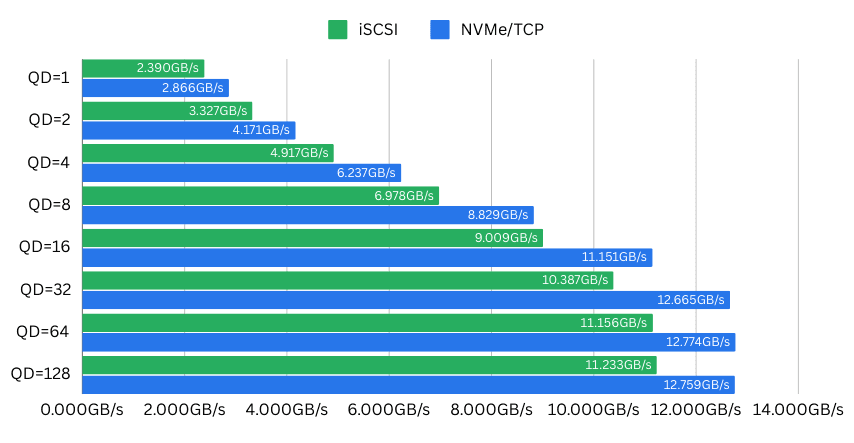NVMe over Fabrics &
SPDK
Blazing-Fast Storage for Modern Infrastructure
Legacy storage protocols like iSCSI and NFS are bottlenecks for low-latency, high-throughput workloads. To stay competitive, a shift to NVMe-over-Fabrics for its unmatched performance, flexibility, and standards compliance is a must. Combined with the Storage Performance Development Kit, simplyblock removes kernel-level I/O bottlenecks and delivers ultra-low latency block storage at scale.

Performance & Scalability That Grows With You
⚡ Ultra-low Latency
📈 Linear Scale-Out Architecture
Simplyblock distributes data across the storage cluster nodes for zero performance cliffs.
💻 No Specialized Hardware
Simplyblock is software-defined storage without special hardware, running on x64 and ARM64 off-the-shelf systems.
🔁 Intelligent Data Services
Simplyblock provides intelligent data services with automatic rebalancing, instant snapshots, and thin provisioning.
How Simplyblock Leverages NVMe-oF and SPDK
Experience enterprise-grade performance with Simplyblock's NVMe-over-Fabrics and SPDK-powered storage engine
Simplyblock is built from the ground up using NVMe-over-TCP as its native storage protocol and SPDK for user-space, zero-copy I/O. Unlike traditional storage stacks that rely on Linux kernel-based processing, simplyblock’s engine bypasses inefficiencies to unleash the full potential of modern NVMe SSDs—on standard hardware.
NVMe-over-TCP brings the low-latency performance of direct-attached NVMe to your network. For ultra-low latency, simplyblock supports NVMe/RoCE. On the other hand, SPDK enables user-space storage I/O, drastically reducing context switches, interrupt overhead, and IOPS bottlenecks.
Together, these technologies give Simplyblock the ability to deliver 150μs latency, linearly scalable IOPS, and consistent, high-performance storage across any supported environment—including VMware, Proxmox, Kubernetes, and cloud platforms.

Architectural Flexibility:
Hyper-Converged, Disaggregated, or Hybrid
Simplyblock supports both hyper-converged, disaggregated, and hybrid deployment models. This flexibility is ideal for mixed-use environments, cost-optimized clusters, or large-scale Kubernetes deployments.
🧩 Hyper-Converged
Co-locate compute and storage for maximum data locality and ultra-low latency.
🌐 Disaggregated
Decouple storage from compute to scale each layer independently and maximize resource efficiency.
🔥 Hybrid-Mode
Combining hyper-converged and disaggregated ensures ultra-low latency and infinite scalability.
